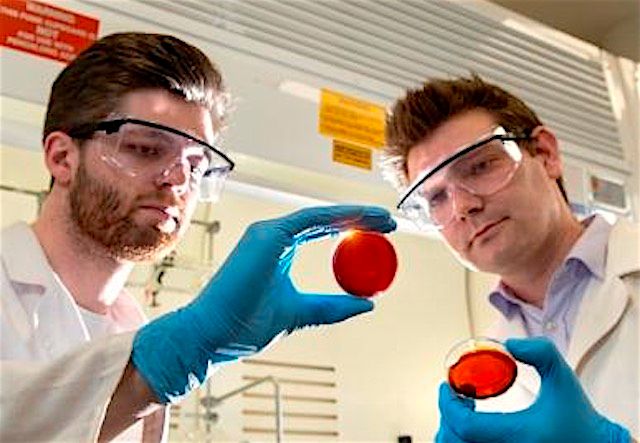Limonene, Found In Orange Peel, Can Clean Mercury From The Ocean

Orange peel can save lives. Researchers at Flinders University in Adelaide, Australia, have made a breakthrough, a polymer from industrial waste and orange peels, which can suck the highly toxic mercury out of water and soil.
Dr Justin Chalker, a lecturer in Synthetic Chemistry at Flinders University, who led the research, said the new soft, jelly-like polymer — known as sulphur-limonene polysulfide — is cheap to produce due to the global abundance of waste sulphur and limonene. That makes it affordable for use in large-scale environmental clean-ups, to coat water pipes carrying domestic and waste water, and even in removing mercury from large bodies of water.

Dr. Chalker and his team were working with sulfur and limonene to create a red, rubber-like polymer. When they began running tests to measure its potentially harmful impact on the environment, they discovered quite the opposite — the substance can suck mercury right out of water. Dr. Chalker noted:
“Mercury contamination plagues many areas of the world, affecting both food and water supplies and creating a serious need for an efficient and cost-effective method to trap this mercury. Until now, there has been no such method, but the new sulphur-limonene polysulfide addresses this urgent need.
“More than 70 million tonnes of sulphur is produced each year by the petroleum industry, so there are literally mountains of it lying, unused, around the globe, while more than 70 thousand tons of limonene is produced each year by the citrus industry (limonene is found mainly in orange peels).
“So not only is this new polymer good for solving the problem of mercury pollution, but it also has the added environmental bonus of putting this waste material to good use while converting them into a form that is much easier to store so that once the material is ‘full’ it can easily be removed and replaced.”
The two waste products when mixed together result in a new non-toxic polymer— a “dark red material”—that turns yellow when mercury is detected and removes it from the areas it has contaminated.
"A polysulfide material was synthesized by the direct reaction of sulfur and D-limonene, by-products of the petroleum and citrus industries, respectively. The resulting material was processed into functional coatings or molded into solid devices for the removal of palladium and mercury salts from water and soil. The binding of mercury (II) to the sulfur-limonene polysulfide resulted in a color change. These properties motivate application in next-generation environmental remediation and mercury sensing."
Mercury is a dangerous pollutant that can damage food and water supplies, contaminate marine life, affect the human nervous systems, reproductive health and IQ of children. Half of the world's mercury emissions come from volcanoes, but the other half comes from industrial activities, including mining and the burning of fossil fuels. The ocean contains about 60,000 to 80,000 tons of pollution mercury. Ocean waters shallower than about 100 meters have tripled in mercury concentration since the Industrial Revolution and that the ocean as a whole has shown an increase of roughly 10% over pre-industrial mercury levels.
It's a nice and helpful research to humanity, although its an unintended achievement which turned out to be the echoing point of his adventure, toxic has plucked the whole world into a profound darkness of unhealthness, so anybody that shines his light of relief toward this big dark world, where the so called rich class are bent on making fortune at detriment of nature, God help us!
He should be supported by the world government to drive his research result home, because the whole world is seriously in need of his result to save a dying breed of human race.
Not spending trillions of dollar in manufacturing missiles and destructive weapons while people are depraved of good environment.
The cost of making it real is seemly inconsqencial, since before now it's a waste :
— is cheap to produce due to the global abundance of waste sulphur and limonene. That makes it affordable for use in large-scale environmental clean-ups, to coat water pipes carrying domestic and waste water, and even in removing mercury from large bodies of water*
Let's get rid of toxic from our soil and water.
It's an important post thanks, for it.